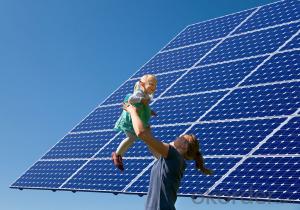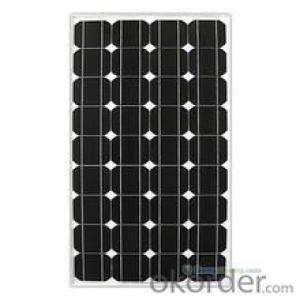Best Flexible Solar Panels for RV - SEC 270W Monocrystalline Silicon Solar Panels
- Loading Port:
- Shanghai
- Payment Terms:
- TT OR LC
- Min Order Qty:
- 199000 watt
- Supply Capability:
- 2000000 watt/month
OKorder Service Pledge
OKorder Financial Service
You Might Also Like
The company mainly engaged in the PV inverter, bus boxes, distribution cabinets, solar photovoltaic power plant control systems, electrical products and photovoltaic power tracking system in the development, production, sales and service.
Through independent research and technical cooperation, master of the photovoltaic power generation system as a whole solution.
Designs and manufactures a complete series of photovoltaic power generation system products.
Designed and built experimental 100kWp photovoltaic power plants, the company has participated in several national and local PV demonstration power plant design and construction work for these projects provide a photovoltaic inverter,
mine convergence box, power distribution cabinet Photovoltaic solar power plant control systems, complete sets of electrical products.
| Maximum Power | 270W |
| Brand | SECSOLAR |
| Cell Type(mm) | Monocrystalline solar cell 156*156 |
| Number of Cell(pcs) | 60(6*10) |
| Manufacture Site | China |
| Open-Circuit Voltage (Voc) | 38.1V |
| Maximum Power Voltage (Vmp) | 30.8V |
| Short-Circuit Current (Isc) | 9.28A |
| Optimum Operating Current (Imp) | 8.77A |
| Power Tolerance | 0 ~ +5W |
| Module Efficiency | 16.6% |
| Dimensions(mm) | 1640*992*40 |
| Weight(kg) | 19 |
| Backsheet | White |
| Frame Color | Silver |
| Frame | Anodized Aluminum Alloy |
- Q: Can solar panels be used to power a telecommunications network?
- Yes, solar panels can be used to power a telecommunications network. Solar power is a sustainable and renewable energy source that can be harnessed to generate electricity for various applications, including powering telecommunication infrastructure. By installing solar panels, the telecommunications network can operate with minimal reliance on the grid, reducing energy costs and environmental impact. Additionally, solar power can be stored in batteries to ensure uninterrupted power supply even during periods of low sunlight.
- Q: hi, i got a pond and i am planning of putting some lights on it during night time. but i want to use solar panels and i have done a bit of research about solar panels and i know how they work, i know that the common voltage to use is 2v so you can use car batteries or deep cycle batteries, but my question is:. what wattage of bulb can you recommend2. how long it would take to drain my battery (can i have it overnight)3. and what wattage of solar panel should i get enough to recharge my battery the next day.hope anyone can help..thanks
- You can get 6V cells and SLA batteries. You would get a panel and batteries suitable for the lights you get though. Depending on what you want to do, you shoud look into LED lighting, which is more efficient than incandescent. You do not want to drain your battery flat. Rather you want to draw only 2/3 of its capacity of so. You would find the lights you want (likely 2VDC), and add up the current they draw, and get a battery that would supply enough capacity (in AH, which is amps time hours) for a couple nights use (to account for weak solar days), and a solar panel to charge two days of use in one good day. You would use a charge controller so that the solar panel does not over charge the battery, and some sort of dusk timer to turn your lights on at dusk and off several hours later.
- Q: Solar panel for battary charging
- Are okorder / or hook up several meters and supervise the process regularly. The UPS has no role in the charging—only the discharging.
- Q: i am trying to get it to work on solar power They are outdoors and we dont feel like running a few hundred feet of power cables. Thanks and best answer will get 0 points.
- Only okorder /... Each battery will will need to be enclosed in a box from the weather to preserve it as well as the charge controllers. All this work can be done with success, but will be costly if that's what you want, and want it done right. You have no short cuts around this unless you want to damage your cameras? I still say it would be much easier to run conduit under ground for your power supply to each camera, and it would cost less money and time.
- Q: I have a question about solar panels. What are the benefits of this system if I installed in my home. for example i know it produces electricity but does it do anything else? How many panel would you guys think I would need for 2000 sq ft. do you know if it produces hot water? Thanks for your help
- 30 years ago when the Hippies shut down our clean Nuclear plants They promised a clean miracle. No such thing! I'm sad to say at best Solar will only provide a fraction of our energy needs. (I guess if one abuses enough drugs they'll think up anything?) I am an apprentice for a Electric foreman; we calculate $50,000.00 in panels will meet the needs of a k foot house. So you would need a hundred grand. You'd save 00 dollers a month in electricity, but you'd be paying ,000 a month to pay off your loan of 00,000.00 in panels. God Bless You indeed a nice thought if it was practical.
- Q: Me and my friend have made our own functional solar panels for considerably less than retail prices and we are thinking about selling them. Are there any legal issues regarding this? Would I need any special licenses or anything? Would using brand name components or parts in the panels make any difference legally? I want to know before I just go out and start doing it. Thanks!
- They are your property. If you want to sell them, have at it. Of course, as soon as the government sees you making some money, they will descend on you like hyenas for ;their 'share'. If you apply and get a 'commercial' permit, they will be in you pocket in a flash. The government will steal anything they can get their hands on. They use 'zoning laws' to carry out their ruse. Then they call themselves your 'partner'. Same as the mafia does. They have a lot of worthless bureaucrats that want somebody else's money. In California, most of the government workers seem to be communists. They hate business and are extremely jealous of any entrepreneur. They think they are experts on Fair business Practices. Most of them have never worked an honest days work in their life. Let alone think up an idea such as yours.
- Q: Can solar panels be used to power a space station?
- Yes, solar panels can be used to power a space station. Solar panels convert sunlight directly into electricity, and in space, where there is no atmosphere to scatter or absorb sunlight, they can generate a significant amount of power. Several space stations, including the International Space Station (ISS), rely on solar panels to generate electricity for various systems and experiments.
- Q: I am heading to Nepal and do not want to lose power on my cameras but they can only be charged via quot;plugging inquot;. A USB connection does not work. Looking for a solar panel to clip to my bag or carry that I can plug in the charger as if plugging in to wall outlet. Thanks.
- Solar panels require a charge converter before it can be used by an AC source. There is no direct solar panel with built in charge converters that I know of because, when purchasing panels, you must purchase the wattage requirements of the job (this can be several panels linked), and a charge converter that will handle the <? panels required. A chain of stores up here in Canada have a portable battery pack that has a solar panel to increase its charge capacity or duration, but its not something you would want to lug around for long periods of time, because is weights in about 3 lbs.
- Q: Can solar panels be used for powering agricultural irrigation systems?
- Yes, solar panels can be used to power agricultural irrigation systems. Solar-powered irrigation systems are increasingly being used in agriculture as they provide a sustainable and cost-effective solution. Solar panels convert sunlight into electricity, which can then be used to power pumps and other irrigation equipment, reducing reliance on fossil fuels and electricity grids. This approach helps farmers save on energy costs and reduces their carbon footprint.
- Q: Can solar panels be damaged by hail or strong winds?
- Yes, solar panels can be damaged by hail or strong winds. Hailstones can cause cracks or dents on the surface of solar panels, affecting their efficiency. Likewise, strong winds can potentially dislodge or break the panels, leading to their damage or complete destruction. It is important to ensure proper installation and consider protective measures, such as using impact-resistant glass or adding extra support structures, to minimize the risk of damage from hail or strong winds.
Send your message to us
Best Flexible Solar Panels for RV - SEC 270W Monocrystalline Silicon Solar Panels
- Loading Port:
- Shanghai
- Payment Terms:
- TT OR LC
- Min Order Qty:
- 199000 watt
- Supply Capability:
- 2000000 watt/month
OKorder Service Pledge
OKorder Financial Service
Similar products
Hot products
Hot Searches
Related keywords


























